
St Helena is an isolated Island surrounded by the rich waters of the South Atlantic and its marine environment supports a diverse array of marine life, including many endemics.
The surrounding ocean is also important for several charismatic migratory species including humpback whales, whale sharks, and turtles, as well as resident populations of dolphins.
Nearly 780 marine species have so far been recorded from St Helena including 72 species of algae, 223 Mollusca, 44 Echinodermata, 173 Chordata (including 10 Ascidacea), 41 Cnidaria, 33 Bryozoa, 69 Formanifera, 64 Crustacea, 24 Porifera, 31 Annelida and 5 Plathelminthes. Of these at least 50 are endemic species.
Inshore habitats include large boulders and bedrock reefs; both white and volcanic sandy areas and regions covered in cobbles and maerl. Although there are no reef- building corals around St Helena there are 10 species of octocoral including the beautiful endemic orange cup coral which covers the underside of ledges and roofs of caves.
The Marine Conservation Section is responsible for the protection of St Helena’s marine environment as set out in the Marine Management Plan and consists of three core staff:
A Marine Conservation Officer, who manages the team with day-to-day tasks, manages the section’s budget, prepares applications and proposals for external funding, liaise with users of the marine environment and wider stakeholders and work with other government departments, NGOs and the local population to ensure we use the marine environment both responsibly and sustainably.
Two Marine Conservation Assistants, who carry out day-to-day activities such as field work, data entry, report writing and raising awareness on all aspects of the marine environment.
At any one time there are also specific project related staff, part time staff, volunteers and support from marine tour operators with our seasonal work.
Contact Details
Marine Section
Environment, Natural Resources and Planning Portfolio
Tel: +(290) 25966
The Marine Centre, The Wharf, Jamestown, St Helena Island, STHL 1ZZ
St Helena MMP Annual Report 2023/24
Marine and Environmental Monitoring
Seabird Monitoring
St Helena has eight different breeding seabird species, mostly nesting on the offshore stacks and islands. A seabird monitoring scheme was initially set up in 2004. Within the scheme, the team monitor nests of key species for breeding success, identify foraging areas during breeding and non-breeding seasons. During the breeding season GPS loggers are used and the non-breeding season GLS loggers are used. GPS loggers provide useful information about where and when birds feed. Bird location can be tracked over time to calculate total distance travelled or determine whether some marine habitats or locations are being used more than others. A dedicated ringing programme is used to ring and measure birds and that will identify individuals and monitor the life of individuals.
Dive Surveys
As result of the Darwin Project ‘Marine biodiversity and habitat mapping’ in 2012, dive surveys became a regular long term monitoring tool. They enable us to quantify seasonal trends in relation to habitat and species, monitoring for invasive species and observe areas of known pollution.
Marine Sightings
A recording system has been set up for members of the public so that when they see any marine species, they can report what they see, number of species, their location, date and time. This information is returned to the Marine Section so that we can enter it into our Marine Sightings Database. Local boat owners and fishermen also own a Marine Sightings record book.
Research Programmes
RRS Discovery
Work for St Helena will start whilst the vessel is en route to the island. Scientists will be conducting seabed mapping of two unnamed seamounts in the northwestern section of St Helena’s MPA and deploying passive acoustics equipment as part of a trial to tackle Illegal, Unreported and Unregulated (IUU) fishing.
SHG’s Marine Apprentice, Cerys Joshua, blog below highlights her experience.
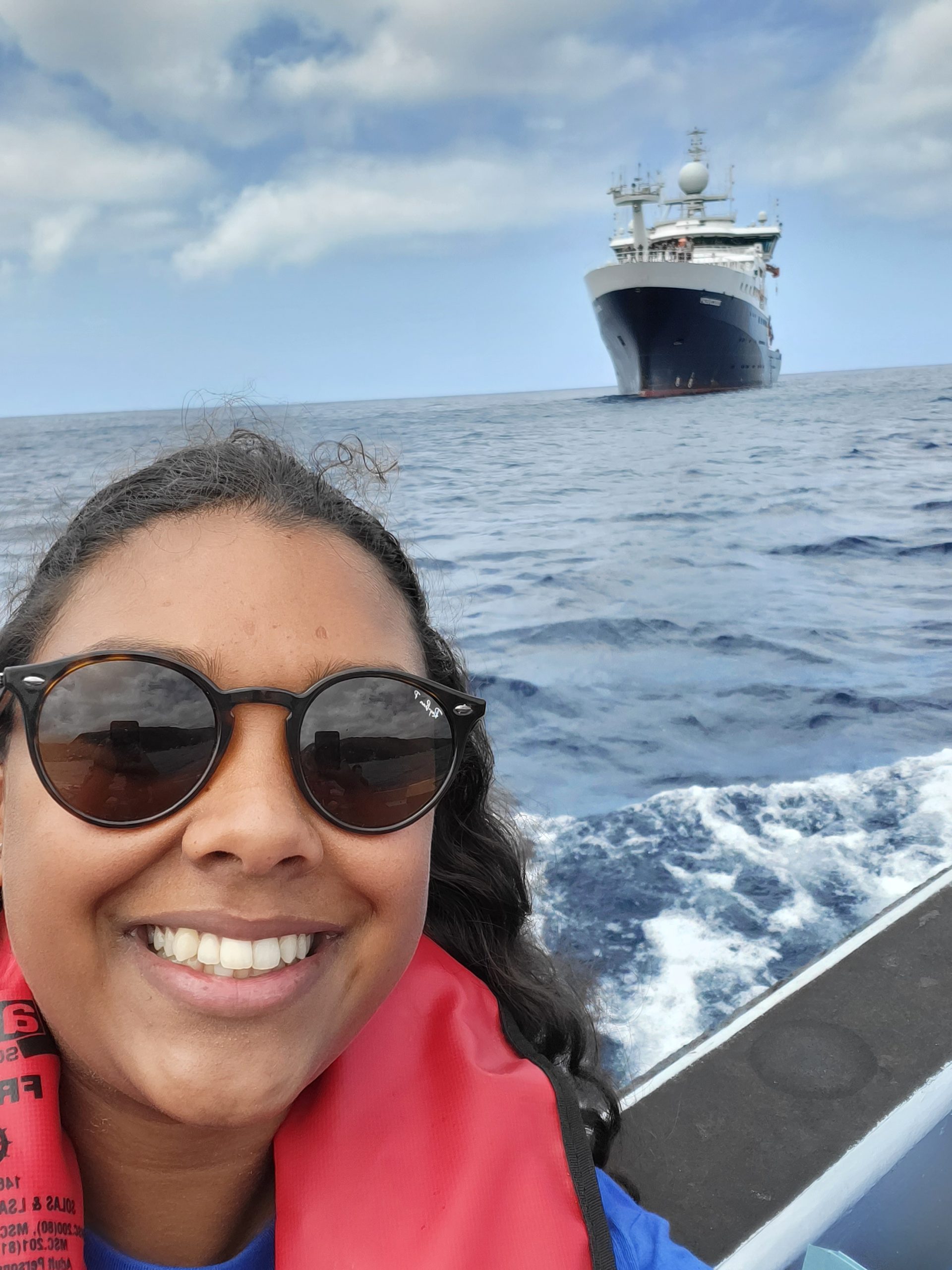
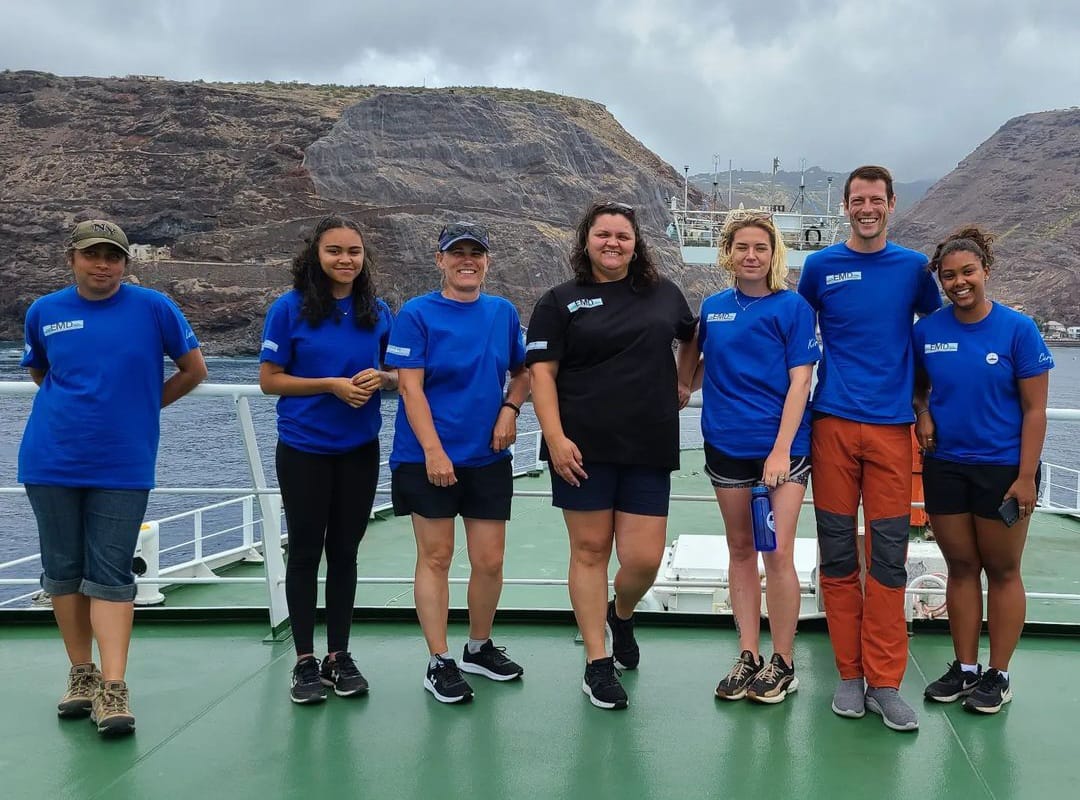
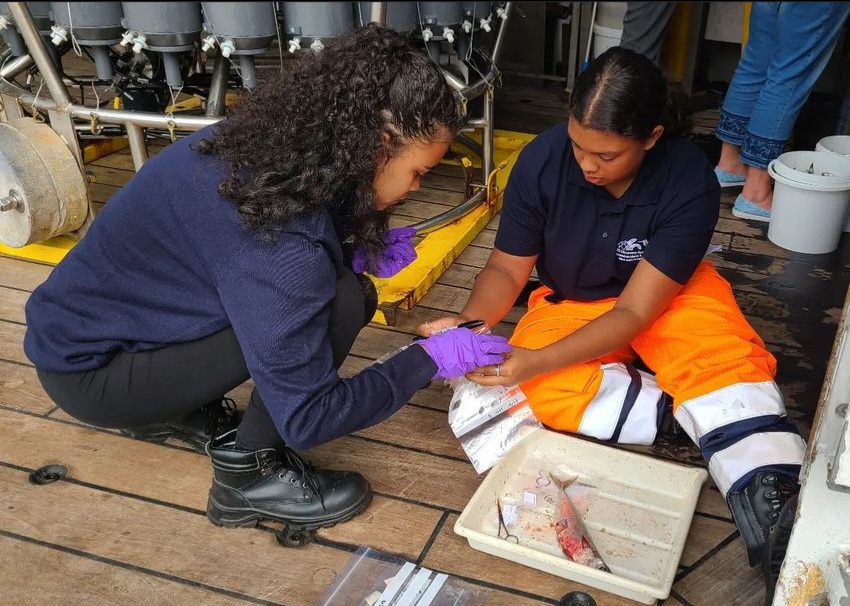
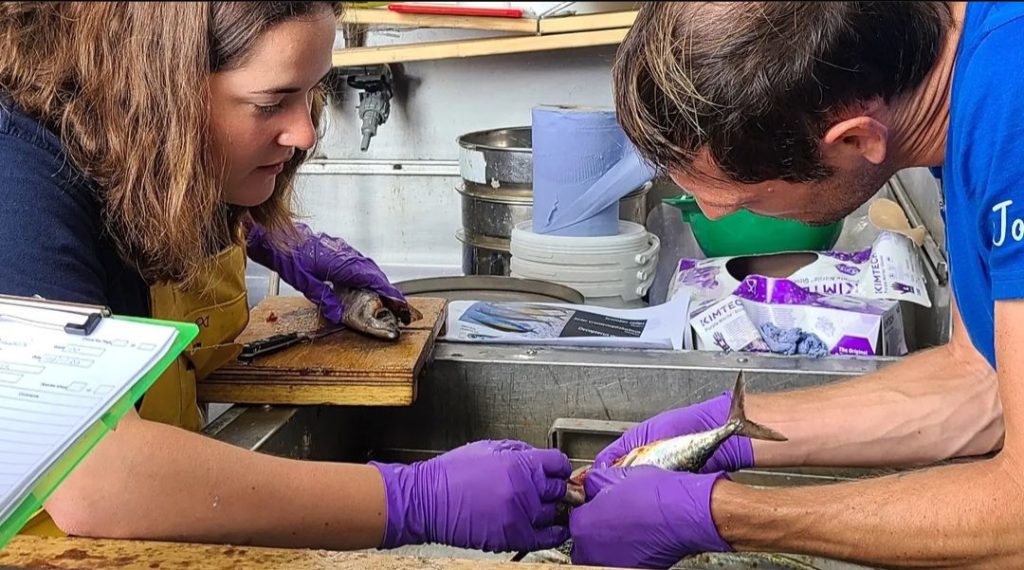
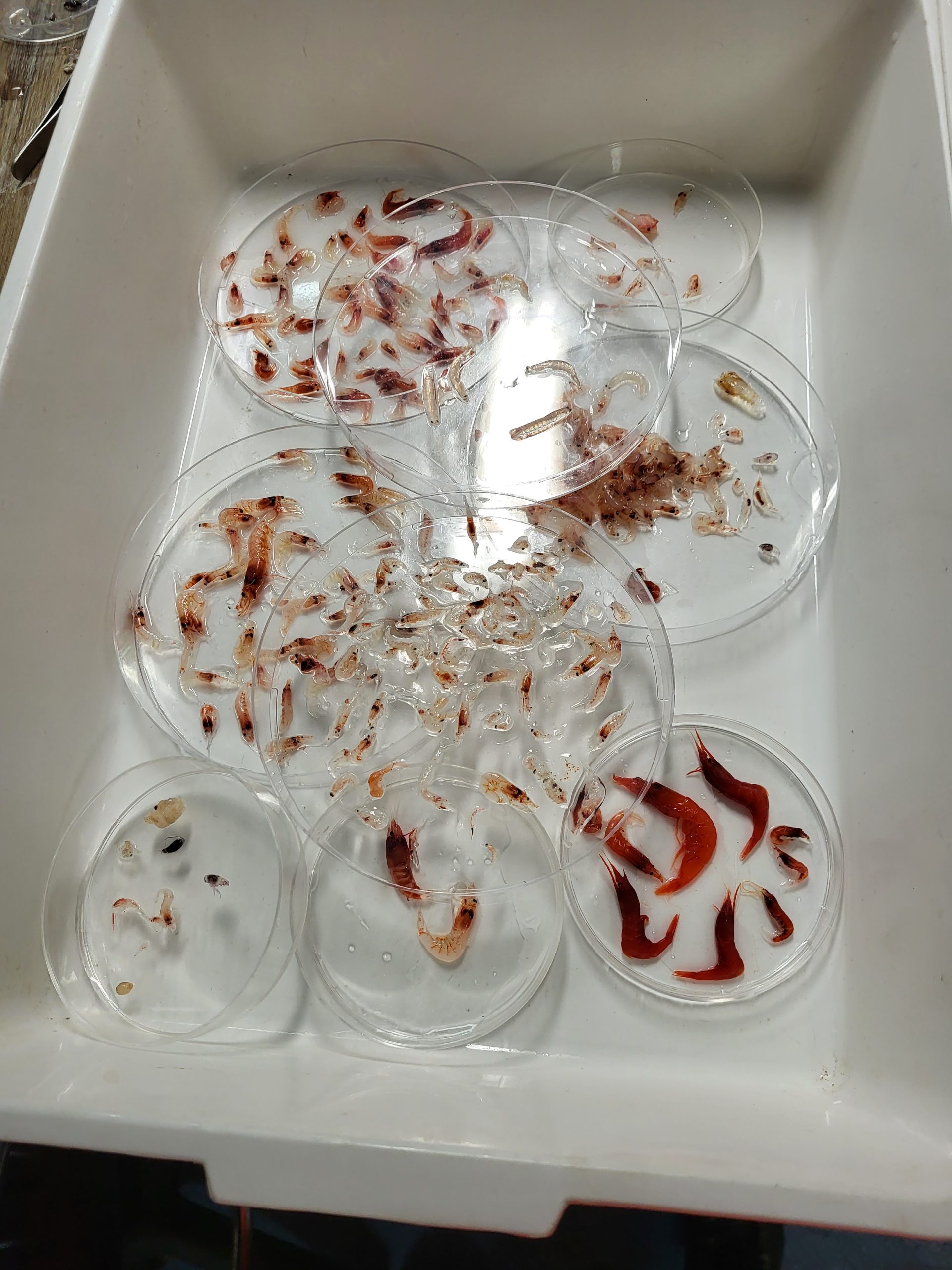
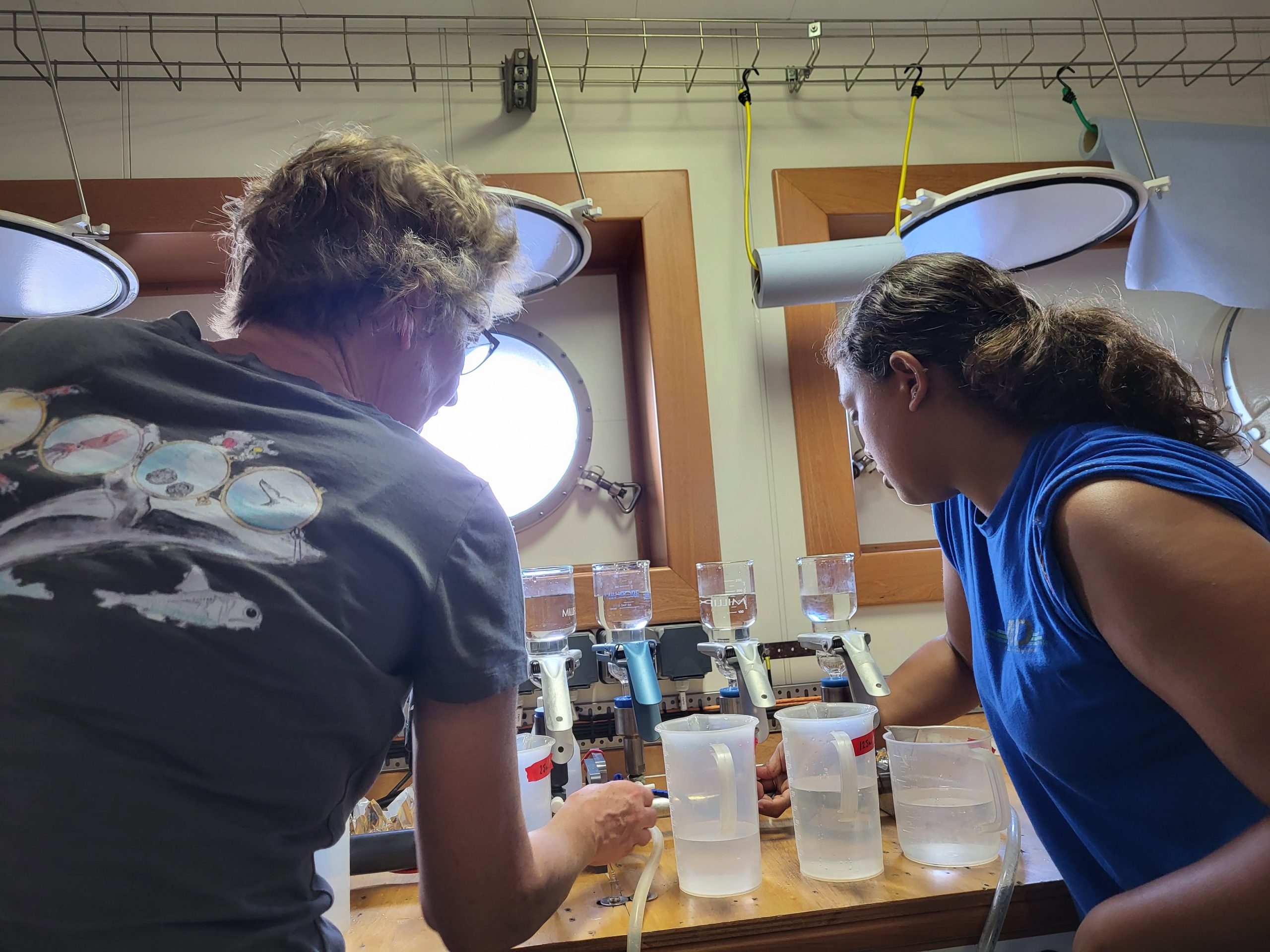
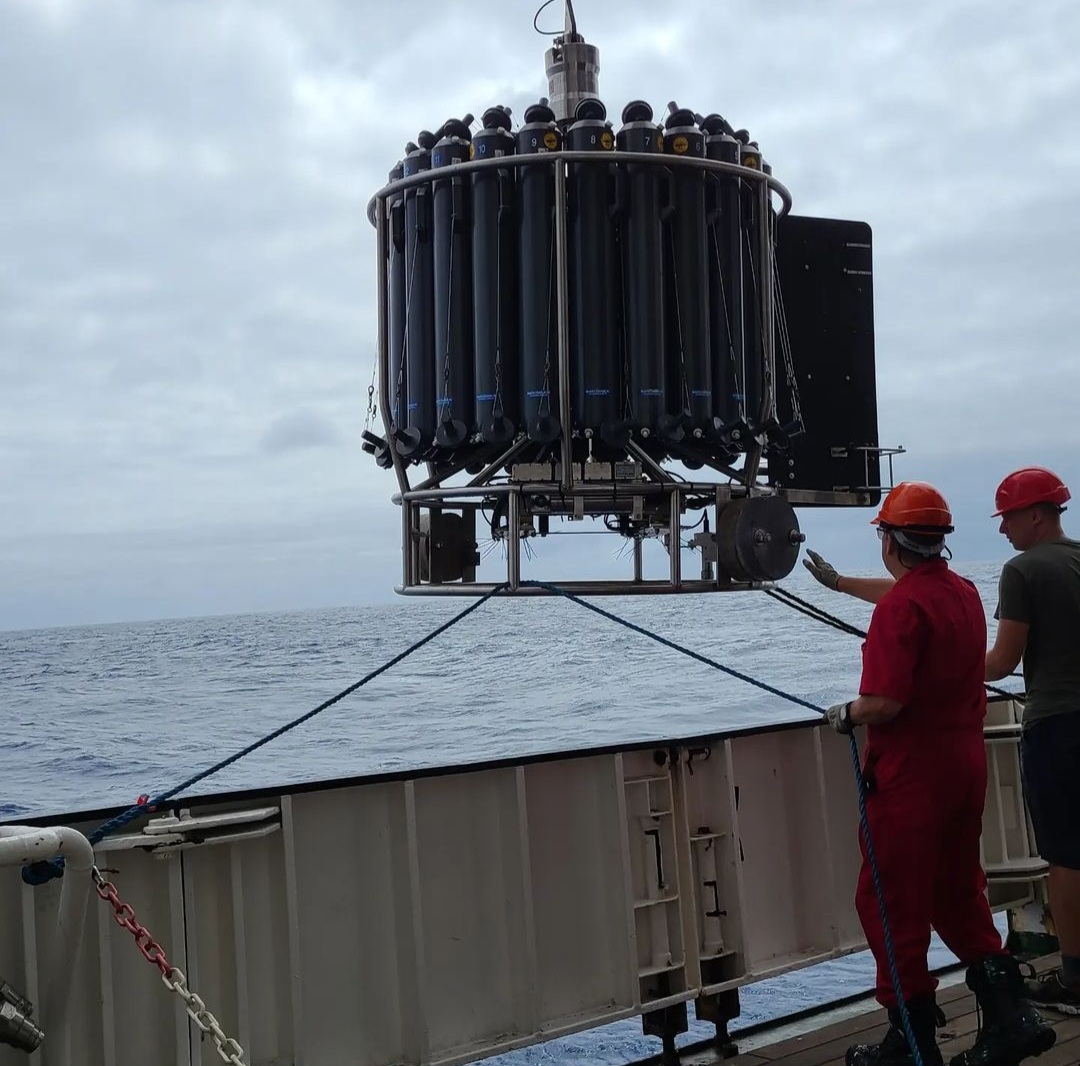
Darwin Projects
The marine section is currently undertaking two Darwin funded projects, one that has started in July 2017 and will continue until December 2019 and called ‘Oceanographic influences on the St Helena pelagic ecosystem’.
The second Darwin Project ‘Sustainable fishery management for St Helena’s lobster populations’ will commence in September 2018 and will continue until August 2020.
Tuna Fisheries Science
This research originally started in 2015 as a Darwin Plus funded project titled ‘Sustainable development and management of St Helena’s fisheries and marine tourism’ (DPLUS039). Based on the data and knowledge obtained during the Darwin Project, it became clear that yellowfin tuna remain resident around St Helena for many months. Such knowledge is important in order to develop local management measures to ensure the sustainability of tuna stocks.
To further investigate and collect the necessary data to develop proper stock assessments, the Blue Belt Programme provided funds and off-island expertise through the Centre for Environment, Fisheries and Aquaculture Science (Cefas). From 2018 onwards a project was established aimed at determining the habitat use, movements and retention time of yellowfin and big-eye tuna in the St Helena EEZ. The diet of both tuna species was investigated in order to link diet to habitat use and provide information on pelagic biodiversity.
In July 2018 the opportunity arose to take part in an international project, the Atlantic Ocean Tropical Tuna Tagging Programme (AOTTP) funded by the International Commission for the Conservation of Atlantic Tuna (ICCAT). The programme was delivered on behalf of Cefas in the UK and deployed in excess of 5800 tags on a variety of tuna species including, Yellowfin, Bigeye and Skipjack. Conventional (dart) tags made up most of the releases, with some satellite and internal data storage tags also deployed. The overall objective of this programme was to contribute to the food security and economic growth of St Helena and Atlantic coastal states by ensuring sustainable management of their tropical tuna resources.
The recaptured tags were used to calculate key population parameters in support of stock assessments, which include:
- growth rates
- natural mortality
- exploitation rates
- migration and stock structure
Based on the data gathered by the different projects over a span of 5 years, Cefas was able to produce a report (Review of St Helena tuna fishery status and management advice) containing scientific advice on the status of the local tuna resources and their sustainable management. The advice was prepared for the St Helena Government to allow them to inform development of management and policy.
As stock assessment is a dynamic process, tuna research on St Helena is ongoing. The Blue Belt Programme continues to fund essential research to ensure the sustainable management of tuna resources in St Helena waters which includes tagging and bio-sampling.
The support of the local fishing industry has been crucial in assisting with both the tag deployment and recapture. The Marine Sections is hopeful for the continued support from the local community so we can all work together towards a sustainable future for St Helena, its people and its fish.
What to do when you catch a tagged tuna?
Collect information on:
- Date
- Location
- Fork length of fish
- Tag ID number
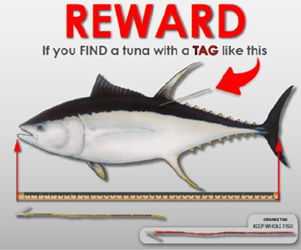
What’s in it for you?
- Yellow Tag
- A £10 reward when you return the information to the Marine Section!
- Orange Tag
- A £10 reward when you return the information + the head of the tuna to the Marine Section!
- Orange Tag + electronic Tag (satellite or internal)
- A £100 reward when you return the information to the Marine Section!
- Please keep the whole fish for the Marine Section to take some biological samples (otoliths, gonads, length, and weight). The fish will still be good for consumption/retail after the sampling.
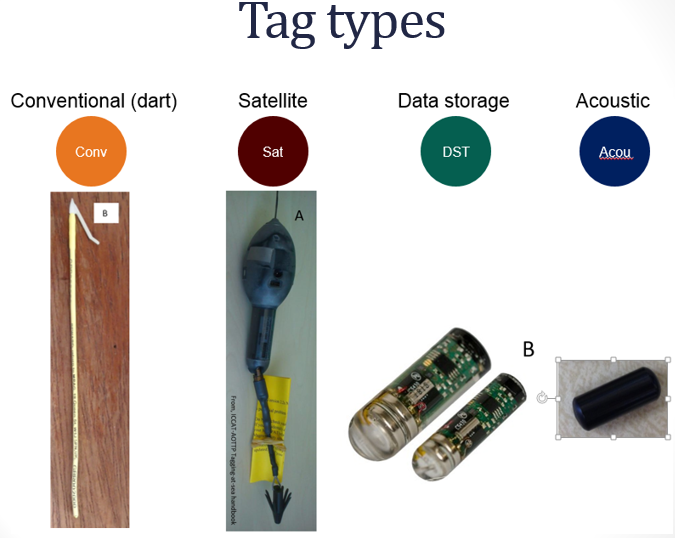
Grouper Tagging
The grouper or St Helena jack (Epinephelus adscensionis) is a widespread species that is distributed in shallow waters throughout the tropical western Atlantic and around the mid-Atlantic islands of Ascension and St Helena (Choat & Robertson, 2008). The jack is the main inshore fish species of interest to commercial fishermen on St Helena and is caught on baited hooks in shallow water all around the island. The grouper are sequential hermaphrodites, starting life as female and switching to be males at 5-8 years of age.
In 2006, concerns raised by the Fishermen’s Association over the sustainability of this stock led to the commissioning by the St Helena Government (funded by OTEP) of a scientific study into the ecology and population status of grouper (Choat and Robertson, 2008). The Choat & Robertson (2008) report made the following recommendations:
- the TAC of 36t/yr should not be exceeded;
- a minimum size limit of 35cm total length or 1kg in individual weight be imposed so as to allow females at least one seasonal spawning opportunity;
- a series of no-fishing reserves be established;
- further investigations of the nature and extent of spawning aggregations be made; and
- a management plan for the grouper stock be developed and implemented.
In September 2016, a Category VI (Sustainable Use) Marine Protected Area (MPA) was declared and a Marine Management Plan published in the St Helena Gazette. One of the objectives of the MPA is to sustainably manage the marine natural resources of St Helena including fisheries, with minimum impact on species abundance, diversity and habitats.
To ensure the sustainability of the grouper stock, it is essential that the long-term sustainable harvest of the stock is determined. Therefore a Grouper Tagging Project was established under the Blue Belt Programme. Since March 2018 data has been gathered by the Marine Section with the objective to:
- gain a greater understanding of the population status, growth, reproductive biology, movement and habitat use of grouper;
- help determine a precautionary sustainable annual catch;
- help inform the development of management measures (e.g. size limits, area closures).
Based on the data gathered by the OTEP and Blue Belt funded projects, Cefas was able to produce a report (St Helena – Grouper Fisheries Advice – Management and Research Strategy) containing scientific advice on the status of the local grouper resources and their sustainable management. The advice was prepared for the St Helena Government to allow them to inform development of management and policy.
As stock assessment is a dynamic process, grouper research on St Helena is ongoing. The Blue Belt Programme continues to fund essential research to ensure the sustainable management of grouper resources in St Helena waters which includes tagging and bio-sampling.
The support of the local fishing industry has been crucial in assisting with both the tag deployment and recapture. The Marine Sections is hopeful for the continued support from the local community so we can all work together towards a sustainable future for St Helena, its people and its fish.
What to do when you catch a tagged grouper?
Collect information on:
- Date
- Location
- Total length of fish
- Tag ID number
What’s in it for you?
A £5 reward when you return the information to the Marine Section!
Quarterly Catch
Marine Debris Project
The aim of this project is to establish a monitoring programme for single use plastics whilst reducing the amount of plastic entering the marine ecosystem. In order to do this the project will look to establish a national plastic recycling and education programme, and reduce cost of waste disposal of St Helena.
Outreach Programmes
Marine Awareness Week
This is programme that happens every year for a whole week and each year has a specific theme. The aim of this programme is to allow members of the public and children from both primary and secondary school to understand our marine environment and everything in it. During marine awareness week there are information displays, marine related activities, radio quizzes, game night and marine facts in local newspapers. The team also delivers presentations to schools at assemblies across the island.
Publicity
Public awareness is key in raising the importance of the marine environment. Many Saints are already aware of just how important the ocean is and many rely on it for their livelihoods. The team update the section’s Facebook page, submit articles to local newspapers, publicise marine sightings reminders to encourage Saints to engage with their marine environment.
Links
- Green Turtle Nesting – Rupert’s Beach Blog
- Rock Bullseye Landing Size
- Spearfishing Prohibited Areas
- Closed Season For Spearfishing
- Review Of St Helena Tuna Fishery Status And Management Advice
- St Helena Marine Management Plan
- 2016 Marine Management Plan
- Marine Environment Accreditation Certification Scheme 2023
- Marine Tourism Policy
- Policy for Marine Species Interaction
- Whale Sharks around St Helena
- Guide to diving in St Helena
- Whales and dolphins around St Helena
- Seabirds of St Helena